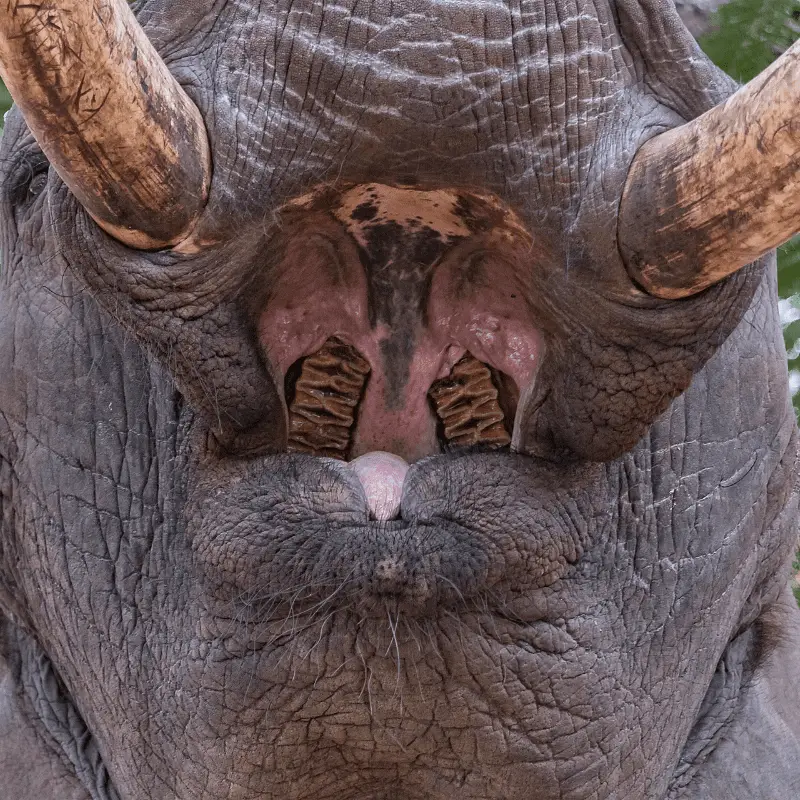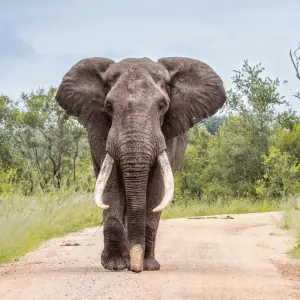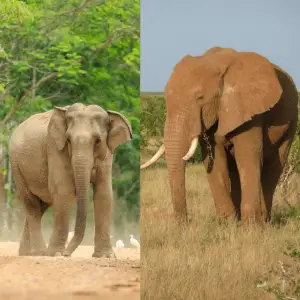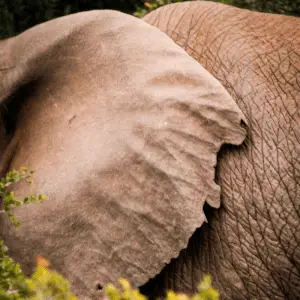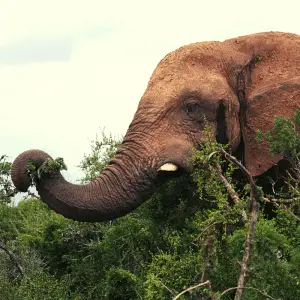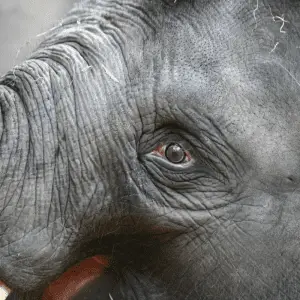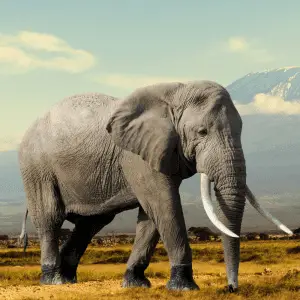Elephants are the largest land mammal in the world and one of the most fascinating animals on earth. Most probably, you will never see an elephant’s teeth up close. The below can help you understand an elephant’s teeth and answer your question.
Elephants have a total of 26 teeth: two incisors (tusks), 12 premolars (Baby Teeth) and 12 molars (Adult Teeth). An elephant can go through six sets of replacement molars throughout its life.
Elephant Teeth Facts
Asian Elephants
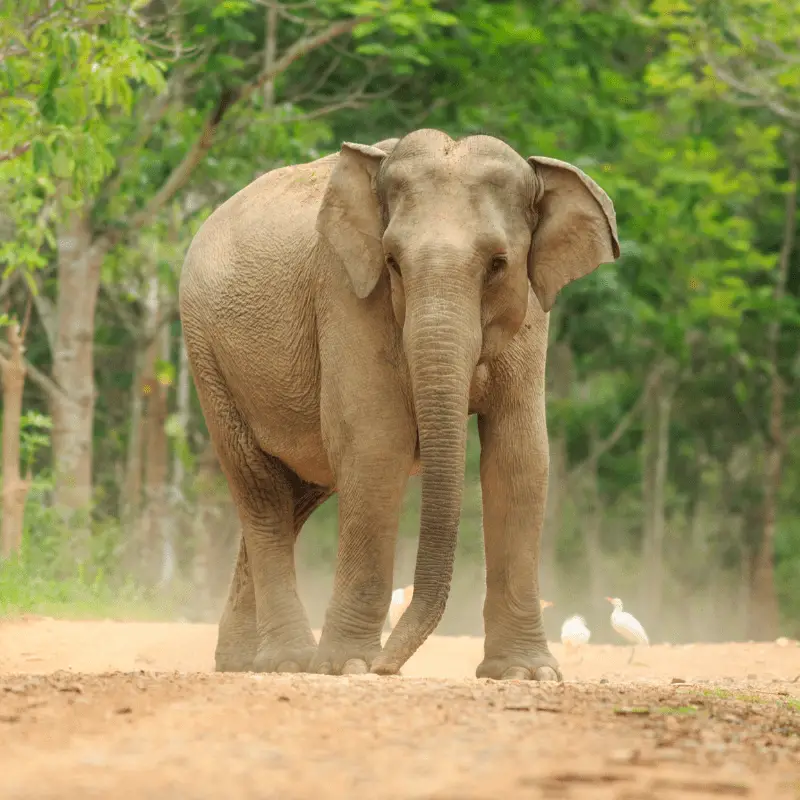
- Asian elephants have smaller tusks than African elephants.
- Males’ tusks are bigger than females.
- They have perfect flat teeth perfect for chewing vegetation.
- Elephants are polyphyodonts mammals and replace teeth many times throughout their lives.
- Asia elephants have long cylindrical ridges on their teeth.
- Tusks are worn down throughout life depending on whether they prefer to use the right or left tusk. Just like us humans being left or right-handed.
African Elephants
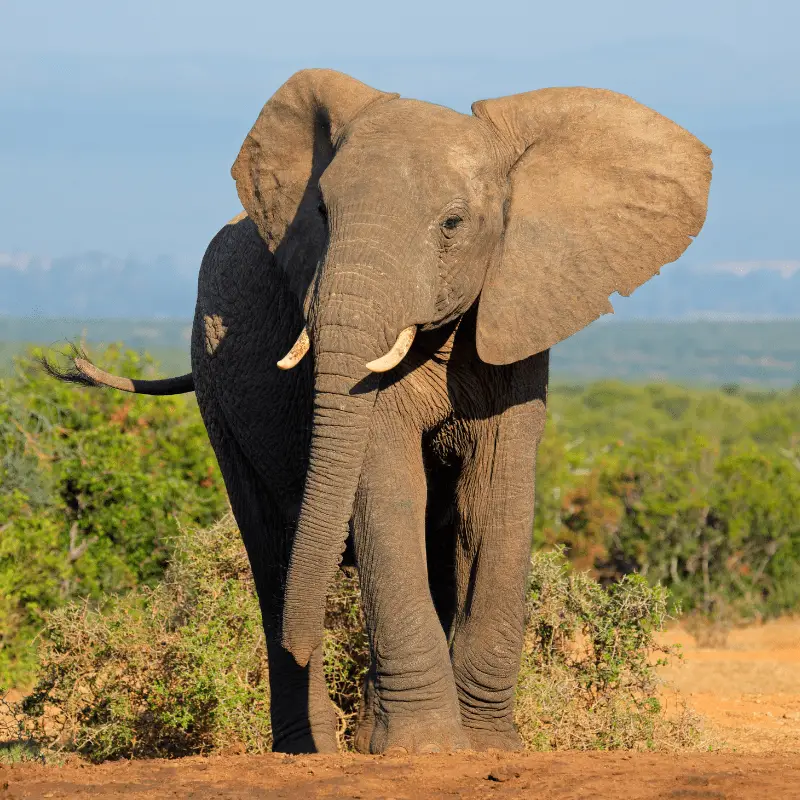
- African elephants have bigger tusks than Asian elephants.
- Males’ tusks are bigger than females.
- They have perfect flat teeth perfect for chewing vegetation.
- Elephants are polyphyodonts mammals and replace teeth many times throughout their lives.
- African elephants have diamond-shaped ridges on their teeth.
- Tusks are worn down throughout life depending on whether they prefer to use the right or left tusk. Just like us humans being left or right-handed.
Tusks (incisors)
Tusks are used for defence, digging, carrying and lifting. They are just like giant teeth, with a nerve that runs two-thirds of them, just like a regular tooth. Baby elephants have temporary tusks when born and will replace them at around 13 months old with their permanent tusks. Tusks are off-white and made of dentine, a hard, dense, bony tissue. The tusk is then wrapped in a hard enamel.
The unfortunate thing is that poachers remove the tusks of an elephant for their ivory. Considering how family-originated elephants are, this behaviour is one of the most terrible things imaginable for a herd of elephants to go through.
| Animal | Teeth Amount |
|---|---|
| Humans | 32 |
| Cat | 30 |
| Dog | 42 |
| Cow | 32 |
| Horse | 44 |
| Elephant | 26 |
| Rhino | 24 and 34 |
| Hippo | 36 |
Do elephant tusks grow back?
No, it will never grow back once the tusk is broken, damaged or removed.
Do elephant molars regrow?
Yes, elephant molars regrow throughout their lifetime.
How much do elephant tusks weigh?
- Male tusks: between 50-79 kg (110-175 lb)
- Female tusks: between 18-20 kg (40-44 lb)
Animals With Tusks Today
- Elephants
- Hippopotamus
- Narwhal
- Walrus
- Warthog
- Wild pig
Which extinct animals had tusks?
- Mammoths
- Mastodons
- Amebelodon
Why do animals have tusks?
Animals have tusks for many reasons. They use them to show dominance, defend themselves against attackers, and as tools such as digging and gathering food. Elephants use their tusks for these purposes, while walruses use their tusk to haul themselves out of the ice.
How much does a single elephant tooth weigh?
- A single tooth can weigh between 1.8-2.0 kg (4-4.5 lb)
What do elephants’ teeth look like?
The teeth of an elephant are an off-white colour. The teeth of an elephant are wide and flat-shaped. Depending on which type of elephant, they will have diamond-shaped or long cylindrical ridges on their molars.
Do elephants get cavities?
No, not often because they dont eat a high-sugar diet, however, an elephant’s teeth will get grinded down with use, and in this case, they will fall out or be pushed out and replaced by a new tooth with their unique dentition system.
Polyphyodont Meaning
A polyphyodont is an animal that can replace teeth within the mouth continuously. The elephant’s teeth are roughly replaced six times throughout its life.
Polyphyodont Mammals
Most mammals are diphyodonts; however, the below mammals are an exception.
- Elephants
- Kangaroos
- Manatees
If you’ve never seen an elephant in person, it might be hard to imagine that they have 26 teeth. They also use their tusks for more than just defence. But not many people know the other uses these impressive mammals put their tusks to or how important they are to elephants’ overall health. Thanks to the unique dentition system, elephants can grow back lost or damaged molar teeth with no problem. Replacing teeth happens roughly six times in an elephant’s lifetime.

